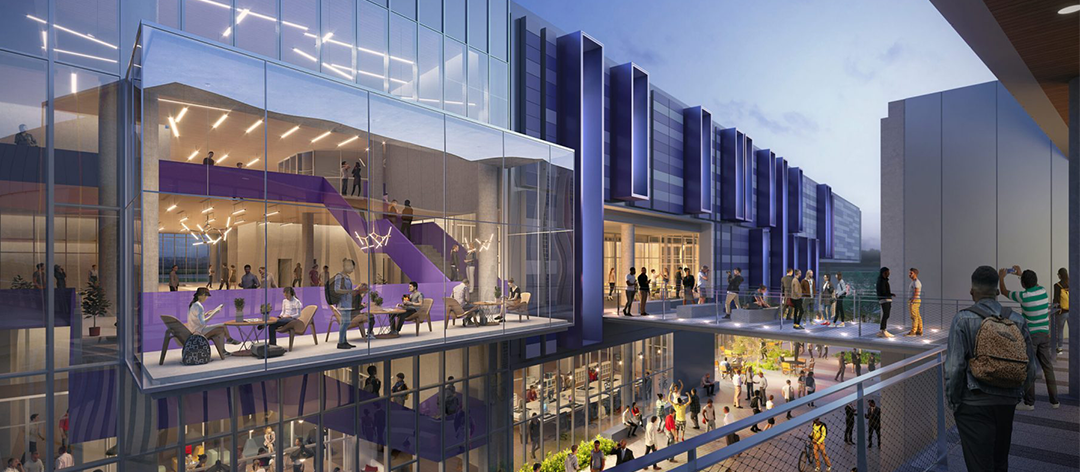Now you see them; soon you won’t.
That’s the outlook for most of the buildings that have formed the core of TCC Northwest since it opened in 1976. Sometime after the end of the spring semester they’ll disappear, one by one, into the realm of nostalgia.
They aren’t the first to go. That distinction belonged to WADM, the administration wing, in 2020, making way for the new NW01. But, for everyone who wasn’t around then, here’s the way it works, according to Daniel Stewart of Jacobs, Inc., the company overseeing the campus redevelopment program.
First, it won’t be with bangs (definitely no implosion, said Stewart), but with surgical precision by a supersized excavator that will start at the top and chomp its way down. Of course, the buildings will already have been denuded of electricity, water, gas and with any asbestos safely abated.
When a building has been reduced to ground-level rubble, anything recyclable will be removed and the rest carted away. The excavator, however, has only taken a breather. Then it’s time for it to dig out all the foundations. Only then will the site be ready for new construction.
The demolition will begin with WFAB since it’s the farthest away from the center of the campus and then will proceed to WTLO and WSTU. WCTS will get a few extra months since it will be needed for swing space but will eventually go the way of its siblings.
Work will proceed on days the campus is open, but the contractor will do everything possible to be as unobtrusive as possible. Sites being demolished will constantly be watered down to mitigate dust. Noise can’t be avoided but will be kept to a minimum.
Before any of the aforementioned can take place, however, there are the buildings’ furnishings to be dealt with. Some will be moved to new quarters and the remainder will either be auctioned off or junked.
The last components to be considered, and arguably the most important, are the people who are to leave their customary classrooms and offices for spaces both new and different. To oversee this delicate but important task, the College has engaged FacilityRX, a company experienced in handling not only the physical aspects of moving but the emotional impact on those who are moved.
Speaking to the President’s Cabinet in February, project leader Sonia Hogeland said that the company’s “secret sauce” is that it looks at a job as more than moving furniture and equipment. “It’s also to get the people over there and make it a very holistic experience,” she said. “We’re very good at the handholding, people side of things.”
“Moves are about changing, and whenever there’s change, there’s fear,” said Mary Shue, Change Manager, with FacilityRX. The best way to combat fear is to provide up-to-date information and make sure that the flood of questions to come are answered thoroughly and promptly. “What we like to do in a move,” she said, “is actually to address as many of these things as we can before people move so that the process goes smoothly. People like to know what’s going on and be told what’s going on.”
The process will include what you might expect: boxes, tape, color-coded labels and instructions for packing. People are encouraged to have the urge to purge — to discard items no longer wanted or needed.
Just as much attention, however, is paid to what people will find in their new digs as to what they’re taking there. The company wants to schedule as many “engagements” as possible where people can tour the space they’ll occupy long before they move in. Where that’s not possible, those being moved will be able to study floor plans and have photos of things like chairs and desks. “We don’t just say, ‘This is what you’ll move into,'” Shue said. “We’ll say your desktop will be 30 by 60 and its height is adjustable. You’ll have this many drawers and they’ll be this size.”
Hogeland, Shue, and the rest of their team will be visible and spend most of their time on-site to facilitate the move, answer questions, solve problems and — yes — hold hands, if only metaphorically.

